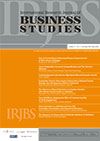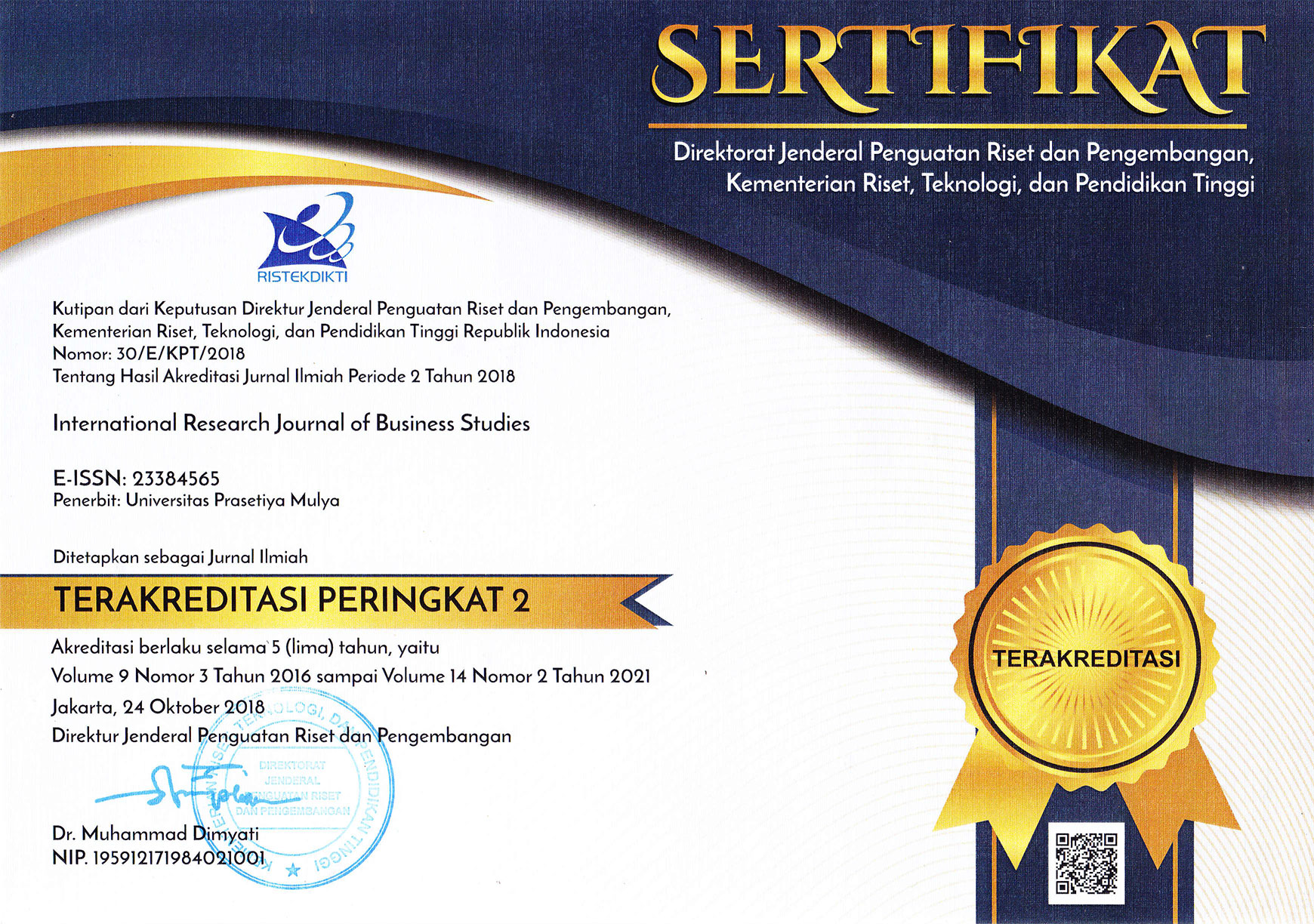Impact of Working Capital Management on Profitability of the Selected Listed FMCG Companies in India
DOI:
https://doi.org/10.21632/irjbs.11.1.21-30Keywords:
Working Capital Management, Profitability, Fixed Effect Model, Random Effect Model, Hausman TestAbstract
Working capital management plays a vital role in the success of businesses because of its effect on profitability and liquidity. The purpose of this study is to examine the relationship and the efficiency of the working capital management strategies of FMCG Company in India. The study used secondary data collected from all the fifteen listed FMCG Company covering the period from 2013-2017. Using panel data analysis, the study finds a significantly positive and negative relationship between profitability and working capital management. Therefore, efficient management of working capital for FMCG Company not only has a positive relationship with profitability but significantly impacts on such firm’s profitability.
References
Afeef, M. (2011). Analyzing the Impact of Working Capital Management on the Profitability of SME’s in Pakistan, International Journal of Business and Social Science, 2(22), 173-183.
Ahmed, S. U., Mahtab, N., Islam, N. and Abdullah, M. (2017). Impact of Working Capital Management on Profitability: A Study on Textile Companies of Bangladesh, Journal of Business & Financial Affairs, 6(4), 1-7.
Akoto, R. K., Vitor, D. A. and Angmopr, P. L. (2013). Working capital management and profitability: Evidence from Ghanaian listed manufacturing firms, Journal of Economics and International Finance, 5(9), 373-379.
Arshad, Z. and Gondal, M. Y. (2013). Impact of Working Capital Management on Profitability A Case of the Pakistan Cement Industry, Interdisciplinary Journal of Contemporary Research in Business, 5(2), 384-390.
Azeez, O. T., Abubakar, M. A. and Olamide, F. T. (2016). Analysis of the Effects of Working Capital Management on Profitability of Listed Nigerian Conglomerate Companies, FWU Journal of Social Sciences, 10(1), 10-20.
Iqbal, N., Ahmad, N. and Riaz, Z. (2014). The Relationship between Working Capital Management and Profitability: Evidence from Pakistan, International Letters of Social and Humanistic Sciences, 20, 14-25.
Kalaivani, P. and Jothi, K. (2017). Impact of Working Capital Management on Profitability of the Select Car Manufacturing Companies in India, International Journal of Pure and Applied Mathematics, 116(24), 13-21.
Kandpal,V. and Kavidayal, P. C. (2013). Implication of Working Capital Management on The Profitability: A Case of ONGC Ltd, India, Indian Journal of Commerce & Management Studies, 4(2), 49-53.
Kasozi, J. (2017). The Effect of Working Capital Management on Profitability: A Case of Listed Manufacturing Firms in South Africa, Investment Management and Financial Innovations, 14(2), 336-346.
Napompech, K. (2012). Effects of Working Capital Management on the Profitability of Thai Listed Firms, International Journal of Trade, Economics and Finance,, 3(3), 227-232.
Palombini, N. V. N. and Nakamura, W. T. (2011). Key Factors in Working Capital Management in The Brazilian Market, RAE-Revista de Administração de Empresas, 52(1), 55-69.
Quang, N. H. (2017). Impact of Working Capital Management to Business Efficiency of Association of Asia Pacific Airlines, International Journal of Mechanical Engineering and Applications, 5(4-1), 8-13.
Rehman, M. U. and Anjum, N. (2013). Determination of the Impact of Working Capital Management on Profitability: An Empirical Study From The Cement Sector in Pakistan, Asian Economic and Financial Review, 3(3), 319-332.
Thakur, O. A. and Mukit, D. M. A. (2017). Working Capital Financing Policy and Profitability: Empirical Study on Bangladeshi Listed Firms, British Journal of Economics, Management & Trade, 17(1), 1-6.
Valipour, H., Moradi, J. and Farsi, F. D.(2012). The Impact of Company Characteristics on Working Capital Management, Journal of Applied Finance & Banking, 2(1), 105-125.
Vural , G., Sokmen, A. G. and Cetenek, E. H. (2012). Affects of Working Capital Management on Firm’s Performance: Evidence from Turkey, International Journal of Economics and Financial Issues, 2(4), 488-495
Downloads
Submitted
Published
How to Cite
Issue
Section
License
Copyright (c) 2018 Debabrata Jana

This work is licensed under a Creative Commons Attribution-ShareAlike 4.0 International License.
Journal Author(s) Rights
For IRJBS to publish and disseminate research articles, we need publishing rights (transferred from the author(s) to the publisher). This is determined by a publishing agreement between the Author(s) and IRJBS. This agreement deals with the transfer or license of the copyright of publishing to IRJBS, while Authors still retain significant rights to use and share their own published articles. IRJBS supports the need for authors to share, disseminate and maximize the impact of their research and these rights, in any databases.
As a journal Author, you have rights to many uses of your article, including use by your employing institute or company. These Author rights can be exercised without the need to obtain specific permission. Authors publishing in IRJBS journals have comprehensive rights to use their works for teaching and scholarly purposes without needing to seek permission, including:
- use for classroom teaching by Author or Author's institution and presentation at a meeting or conference and distributing copies to attendees;
- use for internal training by the author's company;
- distribution to colleagues for their research use;
- use in a subsequent compilation of the author's works;
- inclusion in a thesis or dissertation;
- reuse of portions or extracts from the article in other works (with full acknowledgment of the final article);
- preparation of derivative works (other than commercial purposes) (with full acknowledgment of the final article);
- voluntary posting on open websites operated by the author or the author’s institution for scholarly purposes,
(But it should follow the open access license of Creative Common CC-by-SA License).
Authors/Readers/Third Parties can copy and redistribute the material in any medium or format, as well as remix, transform, and build upon the material for any purpose, even commercially. Still, they must give appropriate credit (the name of the creator and attribution parties (authors' detail information), a copyright notice, an open access license notice, a disclaimer notice, and a link to the material), provide a link to the license, and indicate if changes were made (Publisher indicates the modification of the material (if any) and retain an indication of previous modifications.
Authors/Readers/Third Parties can read, print and download, redistribute or republish the article (e.g. display in a repository), translate the article, download for text and data mining purposes, reuse portions or extracts from the article in other works, sell or re-use for commercial purposes, remix, transform, or build upon the material, they must distribute their contributions under the same license as the original Creative Commons Attribution-ShareAlike (CC BY-SA).
This work is licensed under a Creative Commons Attribution-ShareAlike 4.0 International License.








